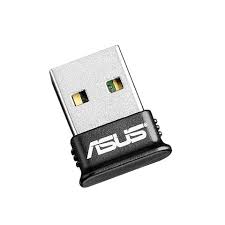If you need the latest driver of Asus USB-BT400, then you have visited the right place. From this page, you can get the most recent setup. The driver is compatible with Windows 7, 8, 10 & 11. It is also supporting Windows 32 & 64-Bit.
If you have an Asus USB-BT400 Bluetooth Smart Ready USB adapter and want to use it on Windows, you need to update its driver. The BT400 supports both Bluetooth 4.0 and Bluetooth Low Energy, so it’s worth updating the driver to take advantage of all its features.
To get your driver updated manually, you can download it from the Asus website. Or you can use a reliable automatic driver updater like EaseUS DriverHandy.
Bluetooth Smart Ready
Bluetooth Smart Ready is a new generation of Bluetooth that allows devices to connect more intelligently with each other. This new technology places less emphasis on sending a constant stream of data and instead puts the connection to sleep when it’s not being used. This allows battery-hungry devices like smartwatches and fitness trackers to run for a much longer period of time, saving you money on batteries.
This generation of Bluetooth also allows for more efficient communication between your smartphone and the devices that you want to communicate with. This makes it easy to control and monitor your devices with your phone, and to use them in ways that are convenient for you.
You can also connect other Bluetooth devices to your device that aren’t smart enough to have their own wireless connection, so they can send and receive data with you as well. This could include home entertainment systems, security cameras, or even your microwave oven and refrigerator.
The latest Bluetooth Smart devices will be used for everything from remote control to health monitoring. A heart-rate sensor could help you keep track of your target heart rate while jogging, or it could be a fitness watch that tracks your pace and distance.
The global market for Bluetooth Smart and Smart Ready will continue to grow in the coming years, thanks to advancements in technology. North America is expected to hold the largest share of the market, primarily due to its population and rising demand for electronic gadgets. However, Asia-Pacific is projected to exhibit the highest growth rate throughout the forecast period.
Compatible with Windows 10
If you’re considering upgrading to Windows 10, it’s important to make sure that your hardware is compatible with the new operating system. The good news is that most older computers are likely to be compatible, especially those built in the last decade or so.
It’s also a good idea to check with your computer manufacturer, as they may have updated the drivers for your device. This can ensure that it works properly with the latest version of Windows 10.
Another option is to run a compatibility test on your machine to see if it will work. This is a great way to determine whether your computer is suitable for a new operating system, and can help you avoid unnecessary frustration.
Once you’re confident that your machine is compatible with Windows 10 and that the operating system will not cause any problems, it’s time to update to the new operating system. This can be done easily, and it’s a good option for anyone who wants to keep their software and hardware up to date.
Many computer manufacturers are now offering free upgrades to Windows 10 to their customers, so you should be able to find an option that suits your needs. It’s also a good idea to get a copy of the Windows 10 media creation tool, which can be used to perform an in-place upgrade without damaging your files.
Compatible with Windows 8.1
Windows 8.1 is Microsoft’s latest attempt to improve the operating system. It offers an improved Start screen, additional snap views, more bundled apps, tighter OneDrive integration, Internet Explorer 11 (IE11), Bing-powered unified search, and more.
Unfortunately, many Windows 8.1 users have had issues after upgrading their machines to the new OS. Some have reported graphics-related problems such as black screens or fuzzy, blurry, or hard to read fonts on desktop applications.
The solution is simple: update your device drivers to the most recent version. This can be done manually, but it’s easier to use a tool like EaseUS DriverHandy which will automatically find and download the drivers for your system.
Before you upgrade to Windows 8.1, make sure you know whether your hardware is compatible with the new OS and which drivers you need for it. This can be done by checking the compatibility center or by looking at your manufacturer’s website.
For example, if you are planning to install Windows 8.1 on a computer that has a 32-bit processor, you’ll need to make sure it supports CompareExchange128. Otherwise, you’ll be stuck with the old Windows 8. If your machine has a 64-bit processor, you’ll need to look for Windows 8.1 drivers on your manufacturer’s website or in the Windows 8.1 Compatibility Center.

